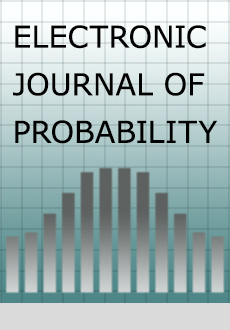Abstract
Many models of epidemic spread have a common qualitative structure. The numbers of infected individuals during the initial stages of an epidemic can be well approximated by a branching process, after which the proportion of individuals that are susceptible follows a more or less deterministic course. In this paper, we show that both of these features are consequences of assuming a locally branching structure in the models, and that the deterministic course can itself be determined from the distribution of the limiting random variable associated with the backward, susceptibility branching process. Examples considered includea stochastic version of the Kermack & McKendrick model, the Reed-Frost model, and the Volz configuration model.
Citation
Andrew Barbour. Gesine Reinert. "Approximating the epidemic curve." Electron. J. Probab. 18 1 - 30, 2013. https://doi.org/10.1214/EJP.v18-2557
Information





